In this code I need to exit loop on certain condition. if position + 1 == len(triangle) Maybe I am not good at Python and don't understand clearly its behaviour.
It is not listening to my command and keep calling same function instead of leaving the loop. The only other thing I tried is to call break in the loop itself when same condition is met but it is not working as well.
def max_value(list, index):
for _ in range(len(list)):
dictionary = dict()
maximum = max(list[index], list[index + 1])
dictionary['max'] = maximum
if maximum == list[index]:
dictionary['next_index'] = index
else:
dictionary['next_index'] = index + 1
return dictionary
total = 0
index = 0
skip = False
position = 0
def sliding_triangle(triangle):
global total
global index
global skip
global position
if not skip:
skip = True
total += triangle[0][0]
total += max_value(triangle[1], index).get("max")
index = max_value(triangle[1], index).get("next_index")
position = 2
sliding_triangle(triangle)
if position + 1 == len(triangle): return <-----------------HERE I AM EXPECTING IT TO EXIT
for row in range(position, len(triangle)):
values = max_value(triangle[row], index)
total += values.get("max")
index = values.get("next_index")
print(position, int(len(triangle)), index, values.get("max"), total)
position += 1
sliding_triangle(triangle)
return total
print(sliding_triangle([
[75],
[95, 64],
[17, 47, 82],
[18, 35, 87, 10],
[20, 4, 82, 47, 65],
[19, 1, 23, 75, 3, 34],
[88, 2, 77, 73, 7, 63, 67],
[99, 65, 4, 28, 6, 16, 70, 92],
[41, 41, 26, 56, 83, 40, 80, 70, 33],
[41, 48, 72, 33, 47, 32, 37, 16, 94, 29],
[53, 71, 44, 65, 25, 43, 91, 52, 97, 51, 14],
[70, 11, 33, 28, 77, 73, 17, 78, 39, 68, 17, 57],
[91, 71, 52, 38, 17, 14, 91, 43, 58, 50, 27, 29, 48],
[63, 66, 4, 68, 89, 53, 67, 30, 73, 16, 69, 87, 40, 31],
[ 4, 62, 98, 27, 23, 9, 70, 98, 73, 93, 38, 53, 60, 4, 23],
]))
